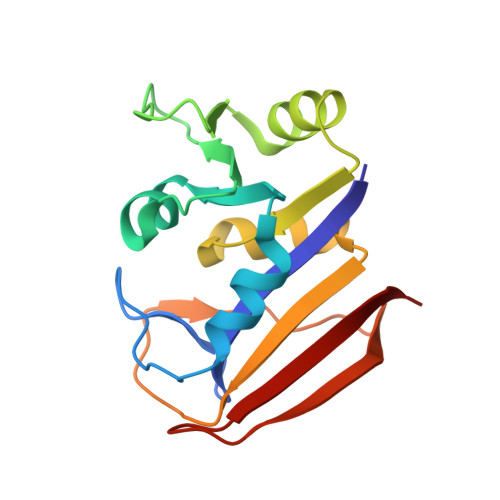Structure-guided functional studies of plasmid-encoded dihydrofolate reductases reveal a common mechanism of trimethoprim resistance in Gram-negative pathogens.
Krucinska, J., Lombardo, M.N., Erlandsen, H., Estrada, A., Si, D., Viswanathan, K., Wright, D.L.(2022) Commun Biol 5: 459-459
- PubMed: 35562546
- DOI: https://doi.org/10.1038/s42003-022-03384-y
- Primary Citation of Related Structures:
7MQP, 7MYL, 7MYM, 7NAE, 7R6G, 7REB, 7REG, 7RGJ, 7RGK, 7RGO - PubMed Abstract:
Two plasmid-encoded dihydrofolate reductase (DHFR) isoforms, DfrA1 and DfrA5, that give rise to high levels of resistance in Gram-negative bacteria were structurally and biochemically characterized to reveal the mechanism of TMP resistance and to support phylogenic groupings for drug development against antibiotic resistant pathogens. Preliminary screening of novel antifolates revealed related chemotypes that showed high levels of inhibitory potency against Escherichia coli chromosomal DHFR (EcDHFR), DfrA1, and DfrA5. Kinetics and biophysical analysis, coupled with crystal structures of trimethoprim bound to EcDHFR, DfrA1 and DfrA5, and two propargyl-linked antifolates (PLA) complexed with EcDHFR, DfrA1 and DfrA5, were determined to define structural features of the substrate binding pocket and guide synthesis of pan-DHFR inhibitors.
- Department of Pharmaceutical Sciences, University of Connecticut, 69N. Eagleville Rd., Storrs, CT, 06269, USA.
Organizational Affiliation:



















